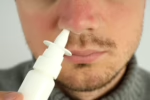Fentanyl – Signs and Symptoms of Usage and Withdrawal

Fentanyl, according to the National Institute on Drug Abuse, “is a powerful synthetic opioid that is similar to morphine but is 50 to 100 times more potent.” Fentanyl can be prescribed by doctors to patients diagnosed with chronic pain who have become tolerant of other opioid painkillers, meaning these other drugs, like morphine, cease to work.
However, fentanyl remains highly dangerous. According to the DEA, fentanyl doesn’t always come in pure form and “is added to heroin to increase its potency, or be disguised as highly potent heroin. Many users believe that they are purchasing heroin and actually don’t know that they are purchasing fentanyl — which often results in overdose deaths.”
Signs of fentanyl use
Fentanyl, once in the body, binds to the opioid receptors in the brain, increasing pleasure and decreasing pain. However, as the brain adapts to synthetic chemicals doing the “heavy work” for it, it begins to stop operating naturally on its own. This has many side effects on the body, including immediate side effects, overdose symptoms and withdrawal symptoms.
Immediate side effects
Fentanyl can be taken as an injection, lozenge or patch on the skin when ordered by a doctor. If illegally purchased, fentanyl comes powdered, on blotting paper, in eye droppers, as nasal sprays or in traditional pill form. After ingesting, the user is likely to feel a number of sensations, from those of intense happiness and pleasure, to less pleasant side effects like:
- Nausea or constipation
- Confusion
- Drowsiness or sedation
- Difficulty breathing
- Complete loss of consciousness
Depending on how much of the drug was consumed, some users might also feel more severe side effects linked to a potential fentanyl overdose.
Overdose symptoms
Because of its potency, or because it is commonly mixed with other drugs like methamphetamine, MDMA, heroin and cocaine, it is not uncommon (or difficult) for an individual to overdose on fentanyl. Signs of overdose are severe and require immediate medical attention. These symptoms include:
- Opioid overdose symptom triad – pinpoint pupils, depressed breathing and decreased consciousness
- Decreased heart rate
- Cold, clammy skin and bluish lips and fingers
- Dizziness
- Low blood pressure
- Lowered heart rate
- Vomiting and nausea
Additionally, a condition called hypoxia is often seen, where breathing slows to such an extent that not enough oxygen reaches the brain, leading to a coma or even death.
If you suspect a fentanyl overdose, always call 911 immediately.
Fentanyl withdrawal symptoms
For individuals seeking freedom from fentanyl use, recovery is possible. However, it must begin with withdrawal, a physically and mentally challenging stage where the brain and body learn to no longer rely on the drug and all remaining toxins from the drug are flushed from the body.
Withdrawal symptoms of fentanyl occur when an individual who has been using the drug for an extended length of time either decreases use or stops altogether. These symptoms manifest in various physical ways, including:
- Difficulty sleeping
- Diarrhea and vomiting
- Leg spasms
- Pain in the muscles and bones
- Intense cravings
- Tears in the eyes
- Increased heart rate and respiratory rate
- Runny nose
- Cold flashes and chills
The fentanyl withdrawal timeline depends on a number of factors with each person, but the presence of withdrawal symptoms will likely begin between 12-30 hours after the last dose. They will peak after about 24 hours and begin to taper off over the period of a week.
However, every individual case of fentanyl addiction is different, so how long fentanyl withdrawal symptoms last depends on the person. Various histories with the drug — such as how long it was used, how large the doses where, whether or not it was used with other substances, even the age and sex of the person — can have a dramatic effect on fentanyl’s withdrawal symptoms.
Seeking help for fentanyl addiction and withdrawal
Choosing to reject addiction and seek a life of recovery is a brave step toward freedom and relief. While the process is lifelong and, at times, quite challenging, it is one that is entirely within your grasp.
Whether you are seeking fentanyl addiction treatment for yourself, or have a struggling loved one who wants professional help, our experts at Silvermist Recovery can help. With options like medically-assisted detox and treatment, holistic practices like yoga and meditation or traditional talk therapy approaches, there’s a personalized treatment plan available for you.
To begin your journey towards recovery, give Silvermist Recovery a call today at (412) 561-9558.






